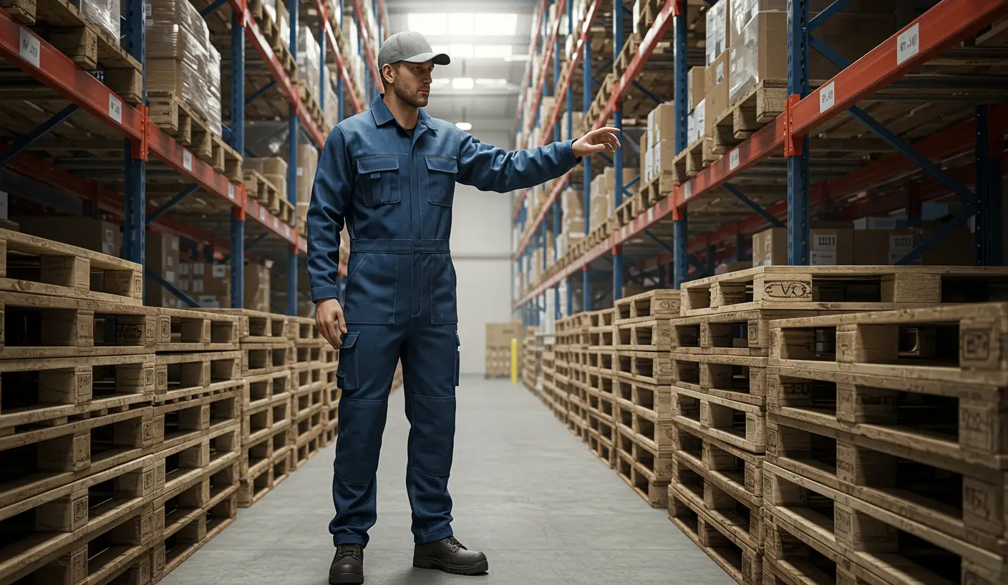Coveralls: Essential Component of PPE

Coveralls provide comprehensive protection across various industries as they are a fundamental component of personal protective equipment (PPE). Coveralls offer full body protection to the individuals working in hazardous environments such as chemical spills, fire, and physical injuries. To ensure workplace safety and adherence to health regulations, it is crucial to comprehend the importance, proper use, and various types of coveralls.
Importance of Coveralls
Coveralls play a pivotal role in safeguarding workers from diverse workplace dangers:
- Protection from Physical Hazards: Workers face risks of cuts, abrasions, and impacts in sectors like manufacturing and construction. To protect workers against sharp objects, machinery, and falling debris, heavy duty materials like cotton blends or polyester are used to provide an additional layer of defense.
- Shielding Against Chemical Exposure: Employees often encounter hazardous chemicals in chemical plants, laboratories, or industrial cleaning facilities. Top quality chemical resistance is provided by specialized coveralls made of materials like polypropylene to reduce the possibility of contamination and skin contact.
- Fire and Heat Resistance: Flame resistant coveralls are required by industries like oil and gas, welding, and firefighting to protect workers from burns due to fire and extreme heat exposure. FR coveralls lower the risk of fire-related injuries.
- Biological Contaminant Protection: Disposable coveralls are worn by medical professionals, laboratory technicians, and individuals handling hazardous biological materials to protect against infectious agents. This safety gear acts as a barrier against bacteria, viruses, and other contaminants to ensure safety and hygiene.
- Enhanced Visibility and Safety Awareness: It is important to wear coveralls designed with high visibility materials and reflective strips in environments with low light or where visibility is compromised, such as construction sites and roadwork areas. These features minimize the risk of mishaps by making sure that employees are visible.
When to Wear Coveralls
The necessity for wearing coveralls is determined by the specific hazards present in the workplace:
- Chemical and Biological Environments: Coveralls provide essential protection against spills, splashes, and contamination in areas where hazardous chemicals or biological agents are handled.
- High-Temperature and Fire-Prone Areas: Flame resistant coveralls should be worn by workers in areas with high temperatures, open flames, or possible fire hazards to reduce the risk of burns.
- Construction and Industrial Sites: Durable coveralls should be worn to protect against physical injuries from machinery, sharp objects, and debris.
- Low-Visibility Conditions: Workers become more visible by wearing high visibility coveralls in environments where visibility is reduced.
Types of Coveralls
Selecting the appropriate type of coveralls depends on the specific requirements of the job and the associated hazards:
- Flame-Resistant Coveralls: Made of materials that resist ignition and stop flames from spreading, these coveralls are ideal for industries with fire hazards and offer vital protection for employees in high-risk settings.
- Insulated Coveralls: Insulated coveralls offer thermal protection to maintain body heat to ensure worker comfort and safety in freezing conditions, best suited for cold environments.
- Chemical-Resistant Coveralls: Made from materials that resist permeation by hazardous chemicals, these coveralls are essential for workers handling dangerous substances, preventing skin contact and absorption.
- High-Visibility Coveralls: With their reflective materials and vibrant colors, these coveralls increase worker visibility in low light levels, lowering the chance of accidents in roadwork and construction zones.
- Waterproof Coveralls: These coveralls are designed for workers in rainy or wet environments to keep them dry during working hours. They are highly recommended for emergency and rescue teams, cleaning and sanitation crews, hikers, and fishermen.
Materials of Coveralls
The choice of material is crucial in determining the effectiveness and comfort of coveralls:
- Cotton: Cotton coveralls are ideal for general purpose workwear as they are known for their breathability and comfort. Untreated cotton is not resistant to flames, that's why they could not offer sufficient protection in hazardous situations.
- Polyester: Polyester coveralls provide longevity and are often blended with cotton to improve comfort and durability.
- Polypropylene: Polypropylene is commonly used in disposable coveralls to protect against non hazardous particles and liquids.
- Nomex: Nomex is a flame resistant material that provides excellent heat and flame protection; that's why it is a preferred choice for industries with fire hazards.
Selecting the Right Coveralls
Choosing appropriate coveralls involves assessing several factors:
- Identify Workplace Hazards: To ascertain the required degree of protection, it evaluates possible risks like chemical exposure, fire hazards, or physical injuries.
- Select the correct material: Consider comfort and durability when choosing materials that offer the required protection. For instance, Nomex is suitable for fire resistance, while polypropylene is ideal for disposable applications.
- Make Sure They Fit Comfortably: Coveralls that do not fit properly might decrease the performance of workers. It is important to choose the right fitting coveralls.
- Check for Compliance with Safety Standards: Ensure that the coveralls provide sufficient protection by confirming that they follow safety regulations and certifications that are relevant to your sector.
- Consider Additional Features: Depending on the work environment, it might be essential to choose coveralls with features such as hoods, elastic wrists, and boot covers.









